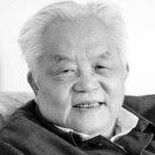Wen J Wu
age ~55
from San Francisco, CA
- Also known as:
-
- Wen Jian Wu
- Wen Jie Wu
- Wen Ying Wu
- Wen Y Wu
- Wei J Wu
- Wen Jwu
- Jian Wu Wan
- Phone and address:
-
27 Florentine St, San Francisco, CA 94112
(510)6812550
Wen Wu Phones & Addresses
- 27 Florentine St, San Francisco, CA 94112 • (510)6812550
- 1901 Mason St, San Francisco, CA 94133 • (415)4092618 • (415)5638129 • (415)5679837
- 541 Union St, San Francisco, CA 94133 • (415)3629295 • (415)4330819
Lawyers & Attorneys

Wen Wu - Lawyer
view sourceOffice:
McGraw Hill Financial, Inc.
Specialties:
Securitization
Structured Finance
Structured Finance
ISLN:
917605114
Admitted:
2004
University:
Beijing Foreign Studies University, Beijing, China, B.A., 1997; Northwestern University, M.A., 1999
Law School:
Columbia University, J.D., 2003
Isbn (Books And Publications)

Us Patents
-
Multistep Method Of Depositing Metal Seed Layers
view source -
US Patent:7682966, Mar 23, 2010
-
Filed:Feb 1, 2007
-
Appl. No.:11/701984
-
Inventors:Robert Rozbicki - San Francisco CA, US
Bart van Schravendijk - Sunnyvale CA, US
Tom Mountsier - San Jose CA, US
Wen Wu - San Jose CA, US -
Assignee:Novellus Systems, Inc. - San Jose CA
-
International Classification:H01L 23/535
-
US Classification:438637, 438675, 438687, 257E21169, 257E21175
-
Abstract:Metal seed layers are deposited on a semiconductor substrate having recessed features by a method that involves at least three operations. In this method, a first layer of metal is deposited onto the substrate to cover at least the bottom portions of the recessed features. The first layer of metal is subsequently redistributed to improve sidewall coverage of the recessed features. Next, a second layer of metal is deposited on at least the field region of the substrate and on the bottom portions of the recessed features. The method can be implemented using a PVD apparatus that allows deposition and resputtering operations. This sequence of operations can afford seed layers with improved step coverage. It also leads to decreased formation of voids in interconnects, and to improved resistance characteristics of formed IC devices.
-
Deposition Of Doped Copper Seed Layers Having Improved Reliability
view source -
US Patent:8017523, Sep 13, 2011
-
Filed:May 16, 2008
-
Appl. No.:12/122118
-
Inventors:Hui-Jung Wu - Fremont CA, US
Daniel R. Juliano - Santa Clara CA, US
Wen Wu - San Jose CA, US
Girish Dixit - San Jose CA, US -
Assignee:Novellus Systems, Inc. - San Jose CA
-
International Classification:H01L 21/4763
-
US Classification:438687, 438627, 438675, 438678
-
Abstract:Improved methods of depositing copper seed layers in copper interconnect structure fabrication processes are provided. Also provided are the resulting structures, which have improved electromigration performance and reduced line resistance. According to various embodiments, the methods involve depositing a copper seed bilayer on a barrier layer in a recessed feature on a partially fabricated semiconductor substrate. The bilayer has a copper alloy seed layer and a pure copper seed layer, with the pure copper seed layer is deposited on the copper alloy seed layer. The copper seed bilayers have reduced line resistance increase and better electromigration performance than conventional doped copper seed layers. Precise line resistance control is achieved by tuning the bilayer thickness to meet the desired electromigration performance.
-
Multistep Method Of Depositing Metal Seed Layers
view source -
US Patent:8298936, Oct 30, 2012
-
Filed:Feb 3, 2010
-
Appl. No.:12/699738
-
Inventors:Robert Rozbicki - San Francisco CA, US
Bart van Schravendijk - Sunnyvale CA, US
Thomas Mountsier - San Jose CA, US
Wen Wu - Milpitas CA, US -
Assignee:Novellus Systems, Inc. - San Jose CA
-
International Classification:H01L 21/283
H01L 21/67 -
US Classification:438637, 438675, 438687, 257E21169, 257E21175
-
Abstract:Metal seed layers are deposited on a semiconductor substrate having recessed features by a method that involves at least three operations. In this method, a first layer of metal is deposited onto the substrate to cover at least the bottom portions of the recessed features. The first layer of metal is subsequently redistributed to improve sidewall coverage of the recessed features. Next, a second layer of metal is deposited on at least the field region of the substrate and on the bottom portions of the recessed features. The method can be implemented using a PVD apparatus that allows deposition and resputtering operations. This sequence of operations can afford seed layers with improved step coverage. It also leads to decreased formation of voids in interconnects, and to improved resistance characteristics of formed IC devices.
Medicine Doctors

Dr. Wen Wu, Foster City CA - DDS (Doctor of Dental Surgery)
view sourceSpecialties:
Dentistry
Address:
1289 E Hillsdale Blvd Suite 9, Foster City, CA 94404
(650)6389688 (Phone), (650)6389689 (Fax)
(650)6389688 (Phone), (650)6389689 (Fax)
Languages:
English
Name / Title
Company / Classification
Phones & Addresses
Owner
Wen Wu, DDS- Family Dental
Dentists
Dentists
1289 E. Hillsdale Blvd, Suite 9, Foster City, CA 94404-1294
(650)6389688, (650)6389689
(650)6389688, (650)6389689
President
BV&H INTERNATIONAL CORP
Whol Men's/Boy's Clothing
Whol Men's/Boy's Clothing
14854 Donna St, San Leandro, CA 94578
(510)3510318
(510)3510318
Owner
Wen Wu, DDS- Family Dental
Dentists
Dentists
1289 E Hillsdale Blvd SUITE 9, San Mateo, CA 94404
(650)6389688, (650)6389689
(650)6389688, (650)6389689
President
QUALIDENT, INC
1289 E Hillsdale Blvd STE 9, San Mateo, CA 94404
Principal
Wu, Wen
Dentist's Office
Dentist's Office
22 Prt Royal Ave, San Mateo, CA 94404
Principal
Tba of America
Religious Organization
Religious Organization
1822 Eddy St, San Francisco, CA 94115
(415)6741532
(415)6741532
1299 Water Lily LLC
Real Estate Services
Real Estate Services
1698 S Wolfe Rd, Sunnyvale, CA 94087
1289 E Hillsdale Blvd, San Mateo, CA 94404
1289 E Hillsdale Blvd, San Mateo, CA 94404
Kings United Group, LC
Scientific Research and Trading
Scientific Research and Trading
833 Washington St, San Francisco, CA 94108
1566 Deluca Dr, San Jose, CA 95131
1566 Deluca Dr, San Jose, CA 95131
Googleplus

Wen Wu
Education:
Peking University - Economics, Peking University - EECS
Tagline:
Me is me, mine is mine!

Wen Wu

Wen Wu
Bragging Rights:
台灣靜心發展協會理事長

Wen Wu
Education:
University of Exeter - Finance and management

Wen Wu

Wen Wu

Wen Wu

Wen Wu
Myspace

Wen Tsun Wu
view source
Wen Wu
view source
Wen Wu
view source
Wen Quian Wu
view source
Wen Qing Wu
view source
Wen Zhong Wu
view source
Wen Shin Wu
view source
Guan Wen Wu
view sourceClassmates
Youtube
Flickr
Plaxo

Wen Wu
view sourceLaurentian University
Get Report for Wen J Wu from San Francisco, CA, age ~55















